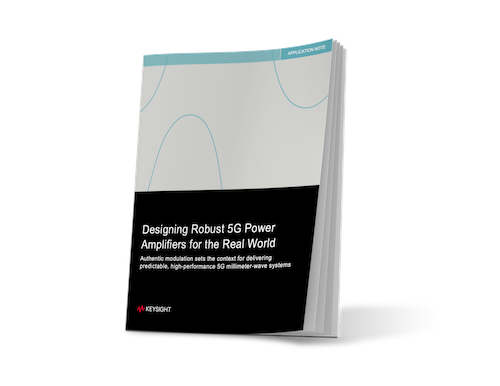“Stupidity is a talent for misconception.” – Edgar Allen Poe
It is customary at this post-festive time of year for bored journalists faced with a shortage of real news to compile lists of the good and bad things that have happened – a kind of Greatest Hits of 2016. Not here. That’s what Facebook is for.
Instead, I’ve compiled a list of surprises, innovations, discoveries, and misconceptions. Some of us got a bit smarter in 2016; maybe a few of us got dumber. But it was interesting and eventful either way.
Twenty-sixteen saw my first hands-on introduction to VR. Through the generosity of a (geographically) distant relative, I got to play around with an Oculus Gear VR headset, as well as a Microsoft HoloLens. Both were impressive in different ways.
If you haven’t seen one, Gear VR is basically an Android phone strapped to your forehead. There’s more to it than that, but that’s the basics. The hardware may be a bit overtaxed for this application, because the unit I tried kept overheating and shutting down. To be honest, I never got a decent impression of what Gear VR can actually do, apart from the neat trick of displaying error messages in midair. I suppose that’s progress, of a sort.
The HoloLens, on the other hand, worked most of the time. At present, it’s ludicrously expensive ($3000 to start), but also pretty nifty. It’s all custom hardware, including a miniature Windows 10 PC buried inside the headset and a pair of thin see-through screens in front of your eyes. Unlike Gear VR, you actually look through the HoloLens at the real world beyond, just with graphics superimposed. This makes HoloLens the safer choice for walking around your living room without tripping over furniture, pets, unwrapped presents, other people, etc.
HoloLens is clearly still in development and you can tell it’s from Microsoft. (Is that redundant?) Its GUI consists of positioning pop-up windows (what else?) around your world, like a PC with a really big wraparound monitor. Moving and interacting with these windows is accomplished with the VR equivalent of left-and right-mouse clicks, which looks to everyone else like you’re waving your hands and conjuring evil spirits. Again, a bit of work left to do here.
What else did I learn in 2016? Well, I didn’t get the PlayStation 4 I asked for. Maybe next year. By then, it’ll be a mobile app.
In other discoveries:
- Did you know that cans of diet soda will float in water, but cans of sugared soda sink? That’s because sugar is a lot denser/heavier than artificial sweetener.
- More than 4000 pounds of litter is removed from the floor of the New York Stock Exchange every day, most of it in little paper slips.
- Ordering your steak well-done increases your risk of cancer by 0.011 percent, according to the National Cancer Institute. (For comparison, smoking increases your risk by 7.9 percent.) On the plus side, microwaving your meat before incinerating it on the grill reduces that risk almost entirely, to just 0.00055 percent. Or, you could just order your steaks medium-rare, like normal people do.
- Formula 1 racecars are, surprisingly, more fuel-efficient than any car on the road. Despite being the fastest cars in the world that can still go around corners, F1 cars are hybrids, and fuel-efficiency is important in racing. Gasoline weighs more than 6 pounds per gallon, and weight is the enemy of speed, so race teams are fanatical about improving their cars’ fuel efficiency.
- About a dozen children in the United States are named Espn.
- The name Häagen-Dazs is completely made up.
- Vikings never wore helmets with horns. Where would they have gotten them?
- “Mercedes” was a girl’s name long before it was a car. Gottlieb Daimler, business partner with Karl Benz, chose to name their vehicle after an early customer’s 11-year-old daughter, Mercédès Jellinek. And the name applies to the car only, not the company, which is still Daimler-Benz.
- Teflon had nothing to do with the U.S. space program. It was discovered by Du Pont employee Roy Plunkett in 1938, long before spaceflight, uh, took flight.
- You can’t really see the Great Wall of China from space. It’s no wider than a typical freeway, and you can’t see those from space, can you?
- Humphrey Bogart never says, “Play it again, Sam” in the movie Casablanca.
- Sherlock Holmes never says, “Elementary, my dear Watson” in any of the books by Arthur Conan Doyle. Nor does he wear a deerstalker cap, ever.
- Contrary to popular belief, there are not more people alive today than in all of history combined – not even close. There are roughly 7 billion people on the planet now, versus roughly 100 billion cumulative lives since 50,000 BC.
- The Pilgrims didn’t wear black clothes or shoes with buckles. You’re thinking of the Puritans.
- Why don’t polar bears eat penguins? Because polar bears are native to the Arctic (north pole), while penguins generally live in the Antarctic. They literally could not be any farther apart.
- Only modern humans can choke on food. Other mammals can eat and breathe simultaneously, no problem. On the plus side, that bit of unfortunate anatomy means we’re also the only mammal that can speak.
- Neanderthals had bigger brains than we do. Whales still do.
- English is the only language that has, or needs, books of synonyms (i.e., a thesaurus). Many speakers of other languages are not even aware that such books exist.
- All the Grape-Nuts cereal in the world is produced in a single plant near Modesto, California, at the rate of about 165,000 pounds/day.
- Oxford University Press sells as many copies of the Oxford English Dictionary in Japan as it does in the U.S.
- McDonald’s refuses to use Heinz ketchup.
- 7.5 percent of California land – that’s double the size of Connecticut – belongs to the military, more than that of any other state.
- A tree can produce about 80,500 sheets of paper. ?Worldwide production of paper is about 1510 sheets per person per year.
- “Gesundheit” is simply the German word for “health,” and the Germans have no idea why Americans (and apparently only Americans) associate the word with sneezing.
- There are just over 100 million parking spaces in America.
- Back in 2003, Intel Chairman Emeritus Gordon Moore observed that the world’s semiconductor manufacturers had produced about 1018 transistors that year, which was coincidentally about the same number of characters in all printed material produced in the same period. He further observed that there are estimated to be 1016 ants in the world, which means 100 transistors for every ant. The cost of producing a single transistor was vanishingly small, about the same as printing a single character in the New York Times.
- I’m still waiting for that PS4. Happy New Year.







